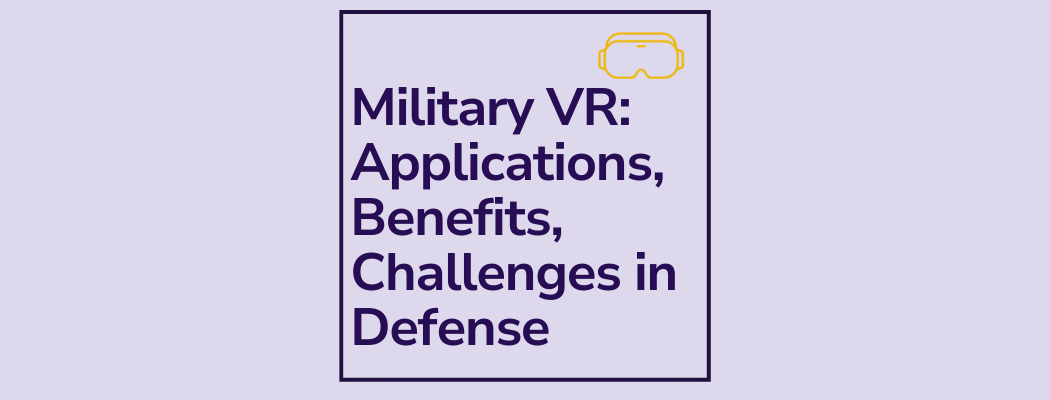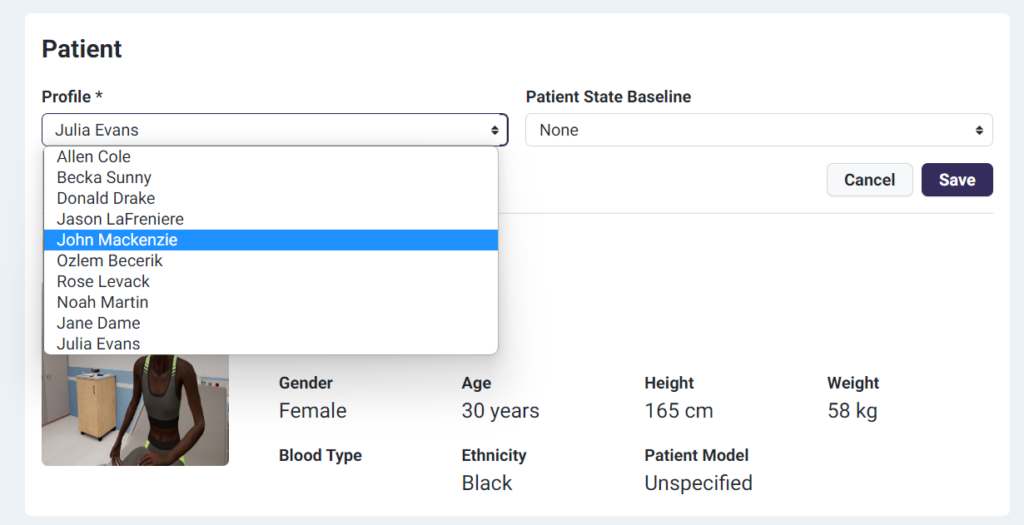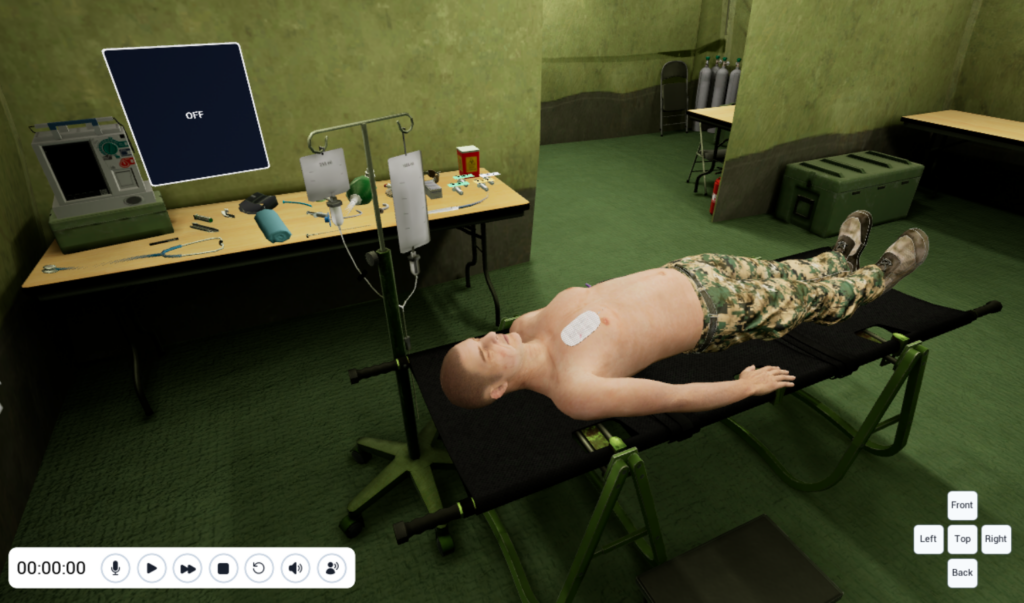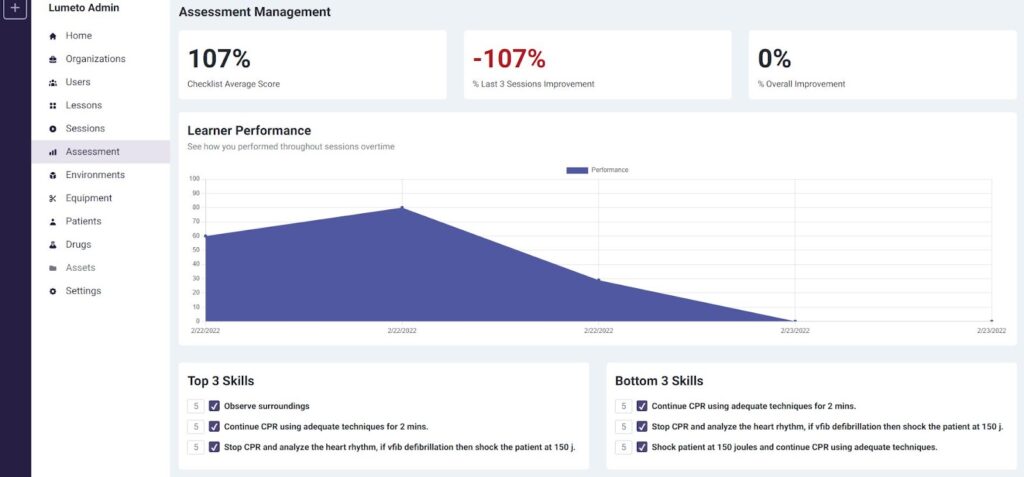
Military VR: Applications, Benefits, Challenges in Defense
Military VR: Applications, Benefits, and Challenges in Defense
The U.S. Department of Defense allocates approximately $14 billion annually to synthetic digital training, which represents about 2% of the total military budget. Virtual reality in the military isn’t exactly a brand-new concept. It’s been around for decades in various forms. But recent advancements in VR technology have made it an essential training and simulation tool for armed forces worldwide.
In this article, we will discuss different cases of VR being used in the military and its benefits and challenges.
Applications of VR in the Military
Virtual reality in military operations traces its roots back to the 1960s. Thomas Furness, a military engineer, developed the first flight simulator for the U.S. Air Force in 1966. It drove the evolution of VR in defense and spurred significant funding to enhance flight simulation.
Over the decades, advancements in hardware and software have significantly expanded its use. Today, VR is a cornerstone of military training and operations.
Here are some key areas where VR is actively implemented.
Military Medical VR Training
Soldiers and medical units often face high-pressure scenarios where quick decision-making can mean the difference between life and death. They must master skills for treating injuries in chaotic environments while managing stress. Medical training equips them to handle a wide range of battlefield injuries, from routine to life-threatening.
In VR training, military medical personnel are exposed to simulated environments that closely mimic combat zones and medical facilities. Some common training programs include:
- Tactical Combat Casualty Care (TCCC)
- Advanced Cardiovascular Life Support (ACLS)
- Prolonged Field Care (PFC)
- Advanced Trauma Life Support (ATLS)
- Mass Casualty Incident Management
- Medical Evacuation Procedures
The U.S. Department of Defense has strongly advocated integrating VR simulation into medical training. This initiative addresses the need to train and upskill approximately 100,000 military healthcare personnel annually.
Lumeto is a premier VR platform offering the largest library of medical scenarios and AI-driven virtual patients. It provides realistic training environments not only for military medics but also for other military personnel. Here’s a field training video from Lumeto’s library:
VR for Combat Training
Reality-based training for combat has always been challenging. Recreating real-life scenarios (such as an active shooter or ambush) demands significant resources — trained role players, controlled environments, ammunition, and more.
With virtual reality military training, trainers can recreate highly detailed combat scenarios. They can introduce as many role players or dynamic elements as necessary.
Through VR, military personnel can practice complex decision-making processes in scenarios that mimic real-world challenges. These simulations also help enhance team coordination by immersing units in shared virtual environments.
Flight and Vehicle Simulations
Today, the scope of VR in flight and vehicle training has expanded dramatically. Full-scale replicas of armored vehicles are integrated with VR systems to provide realistic training environments.
In a more recent development, British forces have adopted VR to train for cutting-edge technologies like operating “kamikaze drones.” These drones, equipped with explosives, are controlled using VR headsets and gaming-style controllers.
Mission Planning
With VR, multiple planners and commanders can meet in the same virtual space, even physically in different locations.
VR also enables military personnel to visualize and interact with operational environments in a three-dimensional, immersive way. Detailed 3D models can be created to represent critical elements such as:
- Terrain
- Infrastructure
- Potential threat zones
- Weather patterns
- Logistical support points
- Population centers
- Escape and evasion routes
Moreover, VR platforms can integrate real-time data feeds, including satellite imagery, UAV reconnaissance, and intelligence reports.
Benefits of VR for Military Training
Here are some benefits that make VR important for preparing military personnel:
Realistic and Safe Training Environments
In the United States, medical errors are estimated to result in at least 50,000 excess deaths and 1,000,000 avoidable injuries each year. VR training can significantly reduce these risks by offering realistic, controlled environments for learning and practice.
Military VR allows personnel to practice complex procedures and decision-making processes without real-world consequences repeatedly. For example, medics can treat AI-driven virtual patients who respond realistically to interventions without risking lives.
With Lumeto, military VR training creates hyper-realistic environments where trainees can practice critical skills with deep immersion. The video below shows Lumeto’s simulation, which provides an immersive scenario for field medical training.
Beyond medical applications, VR creates lifelike combat, navigation, and equipment-handling scenarios. Soldiers can experience the intensity of battle or emergencies in a safe, injury-free environment.
Cost Efficiency
Training a soldier for their first operational assignment can cost approximately $36,000, with daily expenses ranging from $100 to $400 over 180 days. These costs stem from a variety of factors, including:
- Ammunition and Equipment Usage: Real-world training consumes large amounts of ammunition, fuel, and wear-and-tear on vehicles and equipment.
- Facilities and Maintenance: Physical training facilities require constant upkeep, adding to long-term expenses.
- Instructor Salaries: Highly skilled trainers must be present during live exercises, contributing significantly to costs.
- Logistics and Travel: Coordinating personnel, transportation, and supplies for training exercises adds another layer of expense.
Medical training also adds substantial costs, especially for simulating battlefield injuries and trauma care. Live training often requires expensive mannequins, medical equipment, and complex setups to mimic combat zones.
With VR, many of these costs can be minimized or eliminated entirely. Virtual environments provide unlimited repetitions of scenarios to practice without depleting resources. Trainees can fire unlimited virtual ammunition and face unlimited targets within the same VR platform.
Customizable Scenarios
Military training customization is a resource-intensive task. It requires significant effort to recreate specific environments and manage physical resources. For instance, setting up a training session for urban combat may involve mock buildings, logistics coordination, and equipment sourcing.
VR eliminates these challenges by offering unparalleled flexibility. Trainers can design highly specific scenarios with just a few clicks.
The image below highlights Lumeto’s dashboard, a prime example of how VR enables detailed customization. Trainers can select different training scenarios and customize virtual patients.

Attributes like age, height, weight, gender, and medical conditions can be adjusted to simulate realistic cases. For example, medics can train to treat a 30-year-old female patient experiencing trauma with conditions tailored to the session’s objectives.
Improved Team Coordination
Military personnel are busy with deployments and operational demands. It might be difficult for them to coordinate the schedule for team training.
VR addresses this issue by offering accessible training environments anytime, anywhere. Team members can log into shared virtual scenarios from different locations.
The video below shows the team engaged in ACLS training using Lumeto’s VR technology.
Traditional Military Training vs. VR Military Training
VR enhances traditional military training by addressing its limitations while supporting its fundamental objectives. They create a more comprehensive and effective training approach combining realism and innovation.
Resource Dependency
Traditional military training often requires extensive resources, including:
- Ammunition
- Training facilities
- Vehicles and equipment
- Fuel and maintenance supplies
- Mannequins or dummies for medical training
- Role players for scenario enactment
- Logistical coordination for transport and setup
In contrast, VR training minimizes or eliminates many of these dependencies. Virtual environments allow trainees to practice repeatedly without depleting physical resources like ammunition or equipment.
In traditional training, adding a new element—like introducing a new variable or scenario—can take weeks of planning and significant resources. With VR platforms like Lumeto, you can introduce a new element with a single click.
In the image below, Lumeto’s platform shows a medical training scenario complete with a patient, IV stands, monitoring equipment, and various medical tools on a table. These elements exist within a virtual environment, requiring no physical resources.

Stress Inoculation
Stress inoculation refers to the process of gradually exposing individuals to controlled levels of stress. It helps them build resilience and improve their ability to perform under pressure.
Military personnel often operate in environments filled with extreme pressure—during combat missions, medical emergencies, or high-risk rescues. Stress can impair decision-making, coordination, and overall performance without proper training.
VR is an ideal tool for stress inoculation because it can simulate high-pressure scenarios with remarkable realism. VR allows trainers to adjust variables like:
- Time pressure: Introducing countdowns to simulate urgent decision-making.
- Sensory overload: Adding loud noises, explosions, or visual distractions to mimic battlefield chaos.
- Unpredictable challenges: Presenting unexpected obstacles, such as equipment failure or sudden threats.
Feedback and Analytics
Traditional feedback in military training often relies on subjective evaluations from instructors. In contrast, VR and AI-powered training platforms provide data-driven feedback and analytics that are both objective and actionable.
Every action performed during a VR simulation is tracked and recorded. Metrics such as reaction time, accuracy, procedural adherence, and decision-making are analyzed in real-time. Trainers can then use this data to identify strengths and pinpoint areas for improvement. They can also tailor future training sessions to individual needs.

The image above shows Lumeto’s feedback and analytics dashboard. It provides detailed performance reports, including:
- Checklist Scores: Showing overall performance and trends over sessions.
- Learner Performance Graph: Tracking progress across multiple sessions over time.
- Top and Bottom Skills: Highlighting specific skills the trainee excelled in or struggled with, such as observing surroundings or using CPR techniques correctly.
Adaptability to Emerging Threats
Traditional military training methods may struggle to keep pace with rapidly evolving threats. In contrast, VR and AI technologies enable the rapid creation of new training scenarios.
During the COVID-19 pandemic, militaries worldwide faced new operational challenges. VR allows for rapid scenario development to train personnel for decontamination and mass casualty management.
Emerging Trends in Military VR
The rapid evolution of technology has fueled new advancements in military VR. Here are some of the most exciting trends shaping the future:
Haptic Feedback Systems
Haptic feedback systems simulate the sense of touch by delivering vibrations, pressure, or resistance to the user. For the military, haptic feedback systems provide an additional layer of realism in VR training.
Soldiers can feel the recoil of a weapon, the impact of being “hit,” or the resistance of operating machinery.
Imagine a soldier practicing close-quarters combat in a VR environment. With haptic gloves and a vest, they could feel:
- The realistic kickback of a firearm when fired.
- The resistance of chest compressions during CPR.
- Sensations mimicking bullet impacts.
- The roughness of terrain, walls, or equipment surfaces.
- The heaviness of lifting weapons or supplies.
- The tactile sensation of grabbing, holding, or moving virtual items like tools or medical instruments.
Full-Body Motion Tracking
Full-body motion tracking captures the movements of a user’s entire body in real-time. For military applications, it enables realistic simulations for tactical maneuvers, weapon handling, and hand-to-hand combat.
For example, a trainee can physically lift, move, and position a virtual patient onto a stretcher—while navigating obstacles in a simulated battlefield. The virtual reality system will track the medic’s posture and movement efficiency.
AI-Driven Scenarios
AI-driven scenarios use artificial intelligence to create dynamic and highly realistic training environments. Unlike static simulations, these scenarios evolve based on the trainee’s actions to mimic real-world unpredictability.
AI enhances VR training by:
- Generating realistic behaviors for virtual enemies, civilians, or teammates.
- Adapting scenarios in real-time to test decision-making under changing conditions.
- Delivering personalized feedback based on performance metrics.
- Supporting multi-role interactions, where AI can play different characters, such as medics or adversaries.
Lumeto has introduced the industry’s first conversational AI in VR for patient communication. This technology allows trainees to talk to virtual patients, ask questions, and respond to patient concerns.
Military personnel can interact with AI-powered patients in the following ways:
- Medics in Training: Practice interviewing patients to gather medical histories, assess symptoms, and make informed decisions in combat medical scenarios.
- Stress Management: Simulate challenging patient interactions to build confidence in high-pressure environments.
- Cultural Training: Engage with AI patients in different cultural settings, preparing personnel for deployments in diverse regions.
Future of Military VR
The military simulation & virtual training market was valued at USD 13.56 billion in 2023 and is projected to reach USD 21.95 billion by 2032. Defense budgets worldwide will continue to allocate more resources to VR as VR recognizes its long-term cost savings and efficacy.
Rising geopolitical tensions, cyber conflicts, and technological advancements emphasize the necessity of scalable, responsive training. Traditional approaches fall short of these escalating complexities.
VR will continue to provide unparalleled adaptability, preparing soldiers for everything from digital warfare to drone operations.
How Lumeto Helps With Military Medical VR Training
Lumeto provides immersive medical training environments for the armed forces, particularly medical units. We create scenarios that mirror the intensity of real-world combat zones to save as many lives as possible. Armed Forces can also create their own custom scenarios for training.
On Lumeto’s platform, trainees can undergo fully interactive simulations with AI-driven virtual patients who respond like real people. They can interact with patients, monitor vitals, and even manage injuries in real-time. Military personnel outside medic units can also learn basic first aid, triage techniques, or mass casualty management.
Traditional medical training is limited by resources—mannequins, facilities, role players, and so on. With Lumeto, you eliminate those roadblocks. You don’t need physical props or logistical setups. Everything happens in a digital environment that’s scalable, repeatable, and tailored to mission-specific needs.
See how Lumeto can prepare your military team for the challenges ahead. Schedule a demo today!
Frequently Asked Questions About Military VR
Can Military VR Be Used for Psychological Training and Therapy?
Yes, military VR is increasingly being used for mental health applications, including therapy for PTSD (Post-Traumatic Stress Disorder). Immersive environments allow soldiers to confront and process trauma in controlled settings guided by therapists.
How Secure Are Military VR Platforms?
Security is a priority in military VR platforms. They use encrypted networks and secure servers to protect sensitive data and simulations from potential cyber threats.
Can VR Simulate Non-Combat Operations?
Absolutely. Military VR isn’t limited to combat scenarios. It is ideal for medical training in non-combat scenarios like mass casualty events or disaster response. It prepares medics to handle crises efficiently in realistic, resource-limited environments.
Can VR Be Used for Naval Training?
Yes, VR is extensively used for naval operations, including ship navigation, submarine simulations, and emergency response training for fire or flooding aboard vessels.